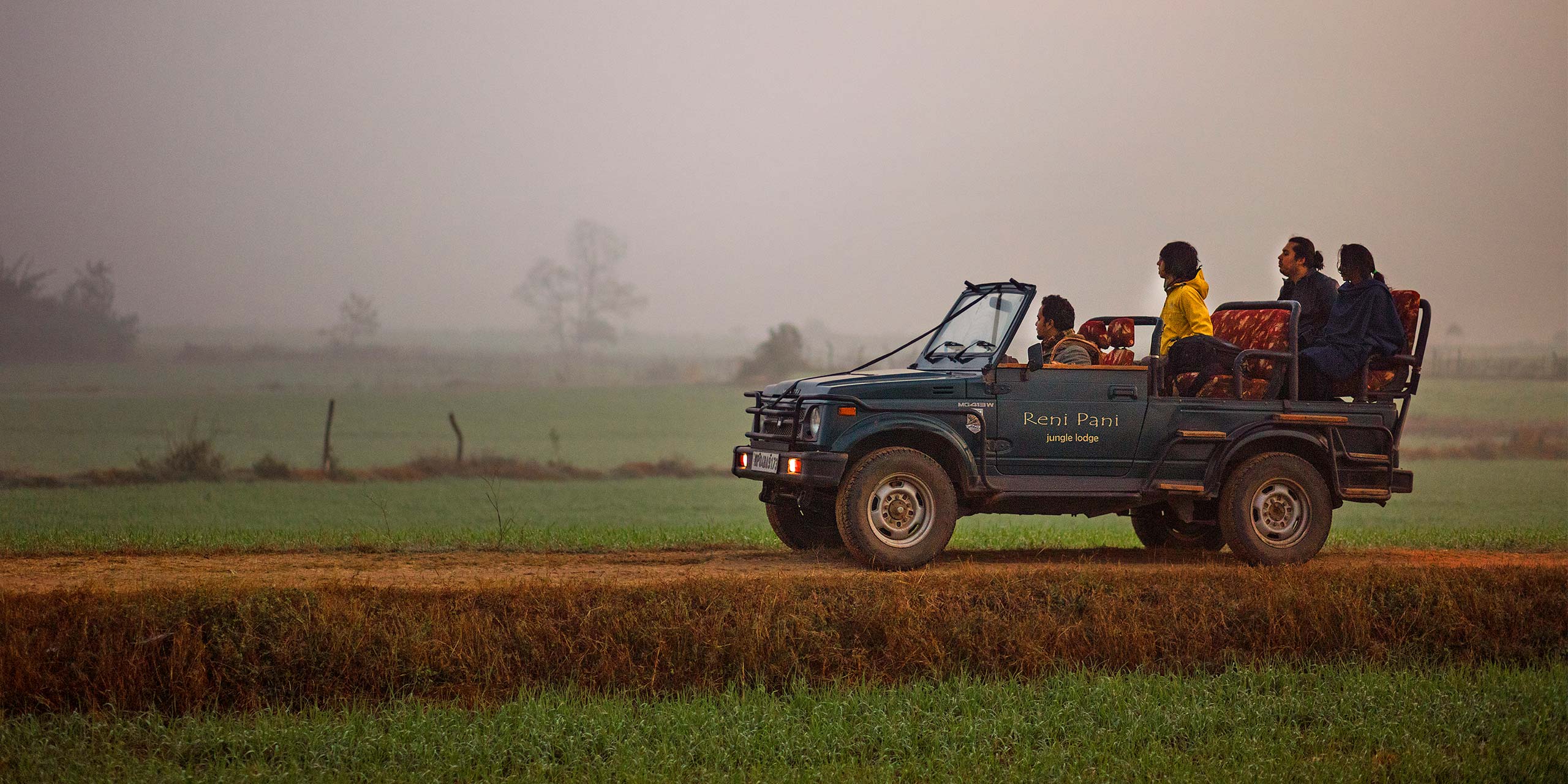
Perched on the fringes of Satpura National Park and Tiger Reserve in Madhya Pradesh, Reni Pani Jungle Lodge is spread across 15 acres of wilderness.
Rustic-chic cottages made with locally-sourced materials dot this untamed expanse. They have huge bay windows, luxurious indoor and outdoor showers, walk-in closets and sit-out lounges.
After the three-hour drive from Bhopal airport, we are ushered into the Gol Ghar. Located centrally at the lodge, this is a curiously-shaped community space for guests to meet, exchange field notes after a jungle safari and unwind in the evening with a drink.

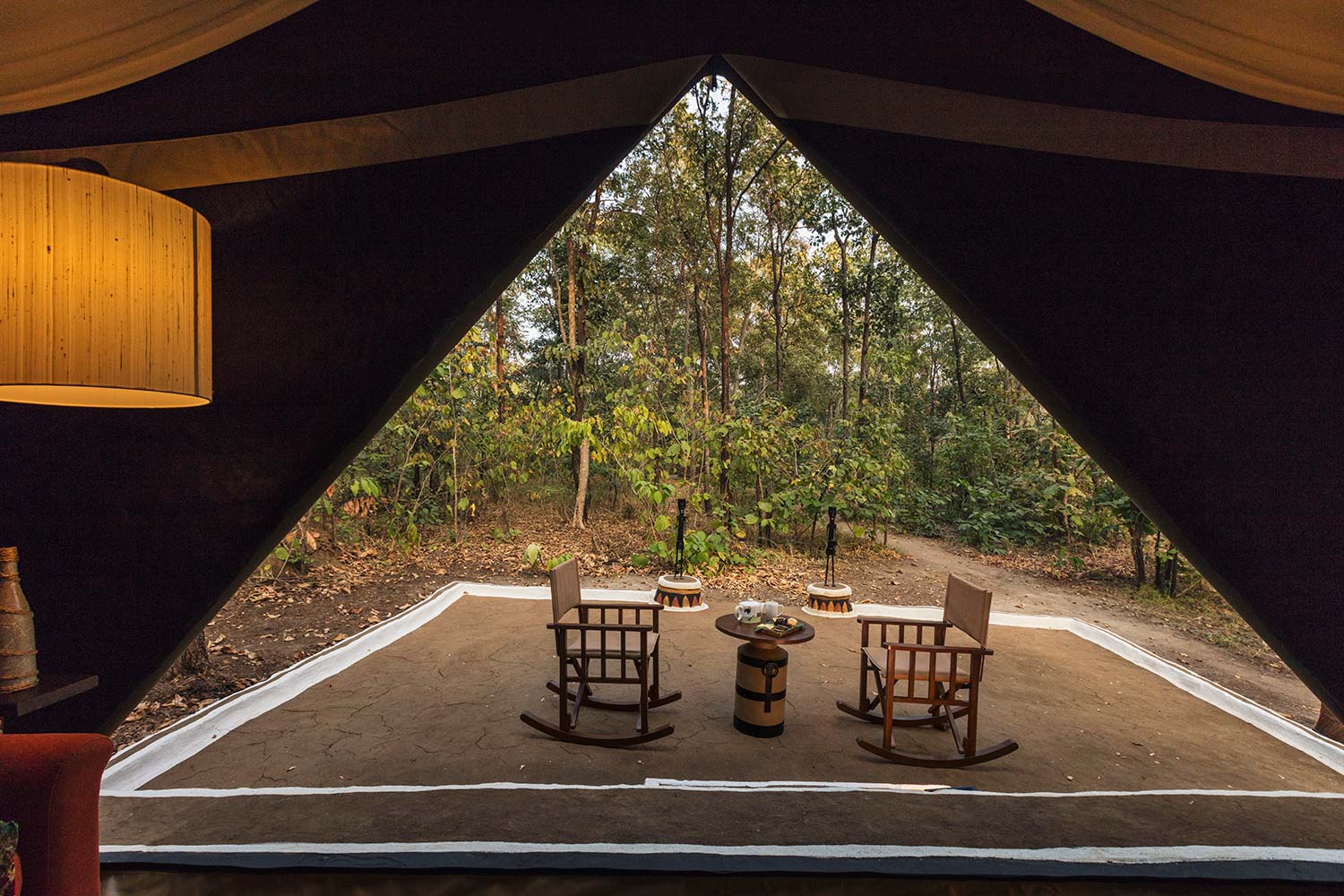
We are introduced to Omkar, one of the four resident naturalists at the lodge, who will be with us for the next two days.
After a sumptuous lunch, we retire to our cottage before our game drive in Satpura National Park. It is a breezy November afternoon, and the late autumn sun spreads its diffused glow over the lush emerald landscape of pristine deciduous forest. The terrain is rugged with stretches of meadows interspersed with tiny rivulets. Satpura is a biodiversity haven, home to leopards, wild boars, bears, four-horned antelopes and the elusive Indian giant squirrel.
This is an ornithologist’s paradise. Indeed, the ancient forest on the serene banks of River Denwa that quietly cuts through the park houses more than 300 bird species including wetland varieties. The diverse terrain of Satpura remains a link between the Eastern Himalayas and the Western Ghats, which facilitates both summer and winter migration of vast avian fleets including northern pintails, bar-headed geese and ruddy shelducks.
“Stop the car,” Omkar signals to our driver. His trained ears have heard the distant distress call of a peacock. Our safari vehicle heaves and jolts to a halt in the middle of the winding unpaved road. The jungle has suddenly gone deadly quiet. This eerie silence means that the big cat is lurking somewhere very near to us.
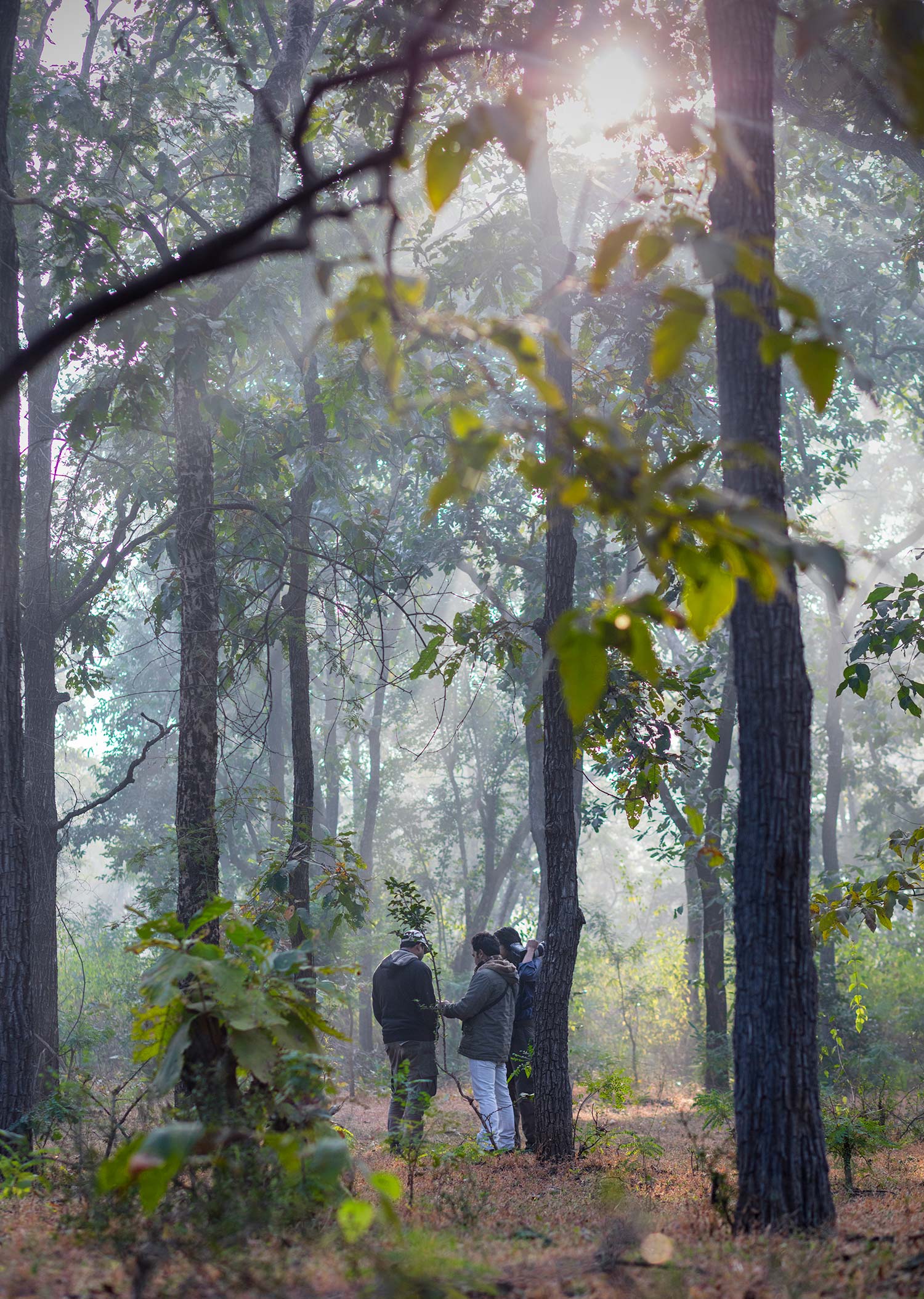
Big cats don’t usually frequent this buffer zone of the forest. But Omkar hinted that we might luck our way to spot a tigress that has been roaming this area for a few days.
A few minutes pass by. We spot a hind with her fawn flash past the undergrowth. Langur monkeys that were sitting motionless on a small clearing charge to the top branches of the towering teak and mahua trees.
“She is moving away,” Omkar says quietly and motions the driver to follow a dirt track. As the car grinds its way over the leaves and twigs, Omkar points down to footprints on the sandy-red soil. “Pugmarks, and they are very fresh.”
Following the pugmarks trail, we spot herds of sambars gracefully crossing the leafy jungle corridor, a flamboyant peacock taking a flight in a flurry of colours and forms, and even a couple of wild boars snuggling their portly frames into a thick hedge. But the tigress fails to show, and we return to the lodge through the lengthening shadows.
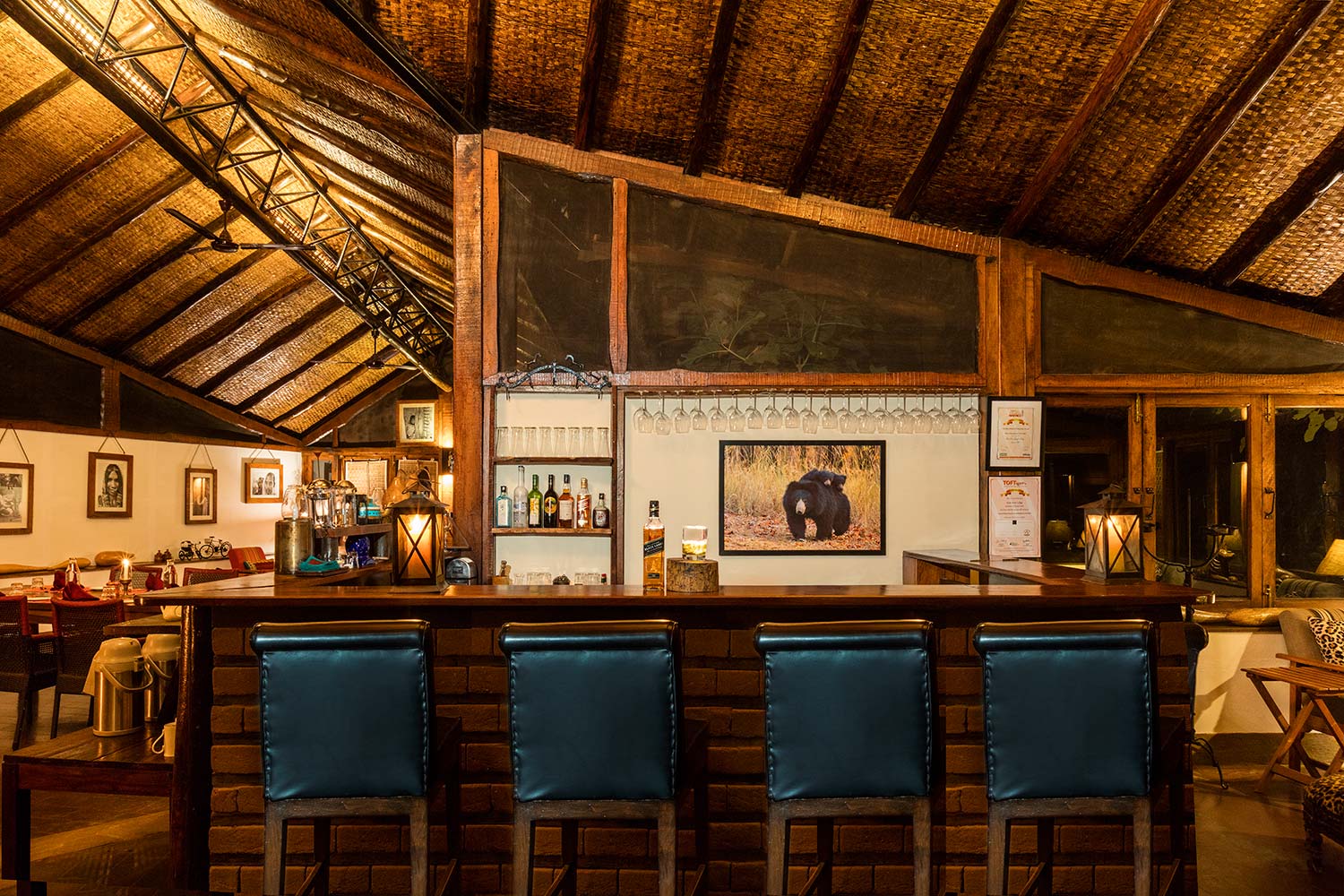
It is a moonlit evening, and the lodge looks like an ancient settlement with flaming torches around it. We meet other guests and exchange field notes over light banter and some fine whisky the management always keeps in stock. Two young ladies from Melbourne share an exciting account of spotting the tigress during their morning safari. At the corner of our table a middle aged man shakes his head dejectedly. He missed spotting the tiger ‘by a whisker’.
A bearded man in his thirties joins our table. He introduces himself as Rakesh, another resident naturalist. Over the delectable 3-course dinner, we learn about Reni Pani’s sustainability initiatives. The lodge is named after the small tribal hamlet just outside the premises, and all the luxury cottages have been built using local and natural materials. Furthermore, all the employees of this jungle resort, including women, are local villagers.
“They have been handpicked and trained to work here in various departments,” Rakesh tells us. One of the staff members—a local village lad—leads us with a torch to our cottage that is perched on a grassy incline. A gurgling stream flows just below the slope. I spot a herd of hog deer ambling on its reedy banks, their graceful contours shimmering in the pale moonlight.
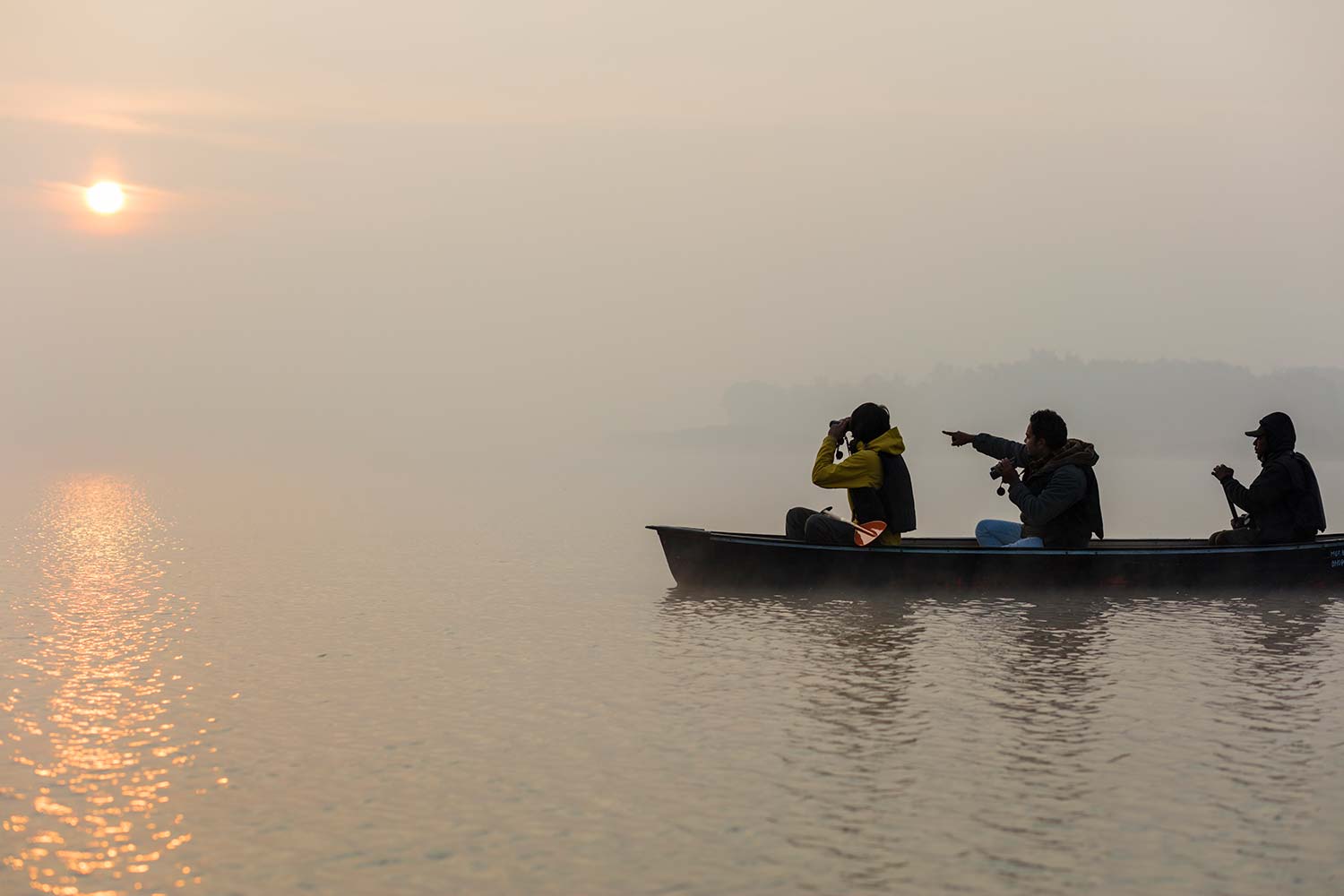
I wake up to a golden dawn and gulp down a piping cup of masala chai to ward off the final vestiges of sleep before getting ready for the morning backwater cruise. The jeep gallops through the pearl-white mist of the morning and before long we are at the banks of River Denwa. Together, we set sail on the shimmering waters of Denwa, a wisp of fog hovering above its placid waters.
As our powerboat glides close to the river banks, we spot herds of sambars grazing in the forest, a couple of marsh crocodiles lazing in the morning sun and the rare sight of a giant squirrel, fleeting in and out of the thick foliage of a tree with its shiny, rust-coloured coat and a long, bushy tail.
We delve deeper into the alluring, watery world of the backwaters and I understand why Satpura is a birder’s delight. In between helping myself with the goodies from the breakfast hamper, I spot some of the riverine residents such as the osprey, a large brown-winged bird of prey, a few winter guests like northern pintails and great cormorants. Most impressive is a red-billed Indian skimmer that suddenly plummets into the water, catches a small fish and glides over the glassy surface of the river.
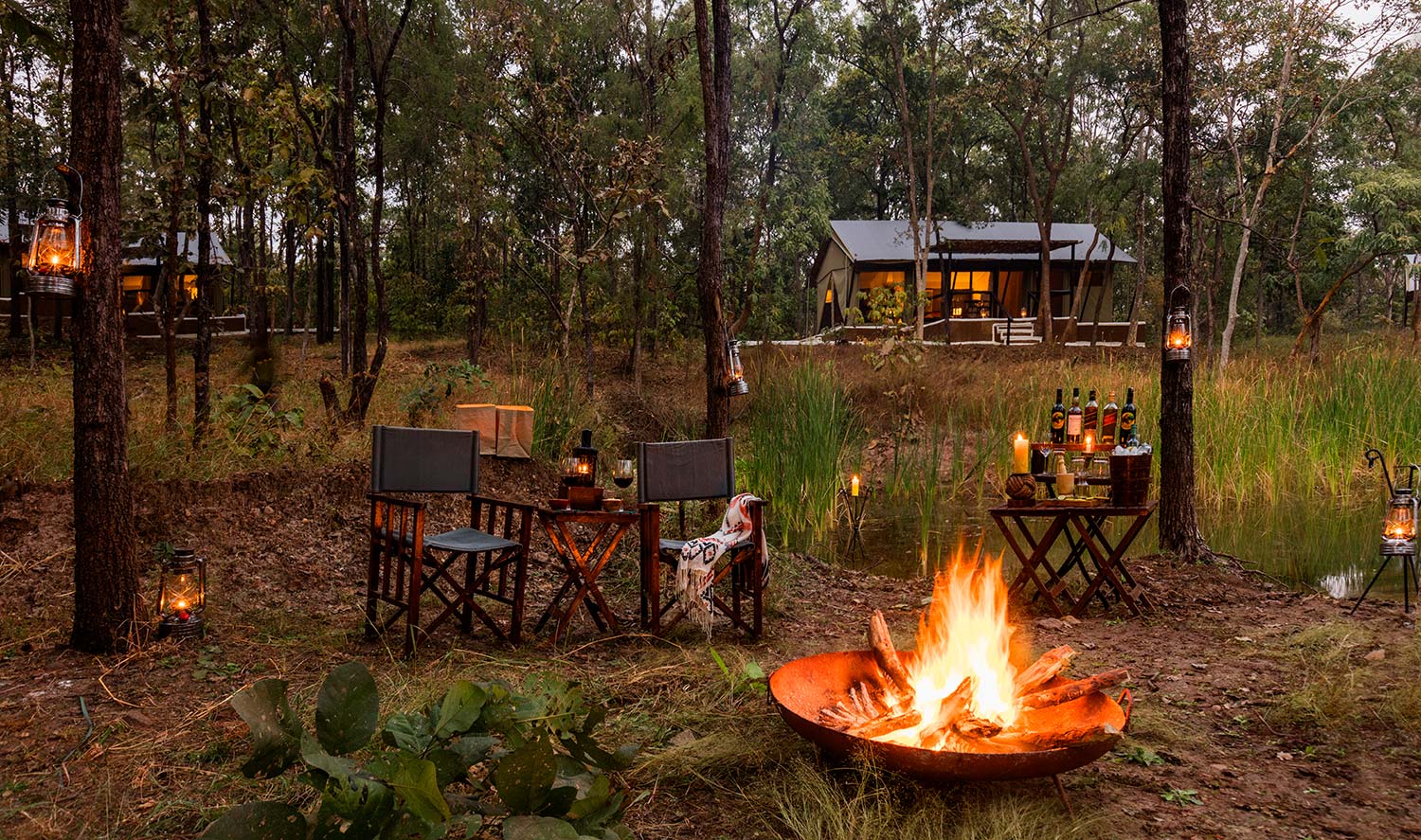
An earthy, leafy fragrance greets us as we disembark from the boat. From here, Omkar leads us through the woodland on a nature walk. The tread through the jungle is an exhilarating, immersive journey with the mushy bed of leaves under my feet and the thick overhead canopy of towering sal and teak forest. The walk through the forest is one-of-kind experience with the odd probability of a close encounter, though all I see is a group of playful langur monkeys basking in a clearing in the forest and a brilliantly-coloured jungle fowl skittering across the jungle path, searching for insects. We cross the dry bed of a seasonal stream to reach our vehicle. Omkar silently points to the tree where the jeep has been parked. Deep scratch marks run through its thick, dark trunk.
“This is how tigers mark their territories,” he says. “This is the tigress’ handiwork, and she was here not more than an hour ago.”
With that revelation fresh in the mind, we hop into the olive green safari vehicle and turn back towards Reni Pani through the undulating terrain, now looking ethereally beautiful, bathed in the mellow winter sun. We may not have spotted the elusive tigers, but the experience of visiting this unique spot has delivered in every other way.
